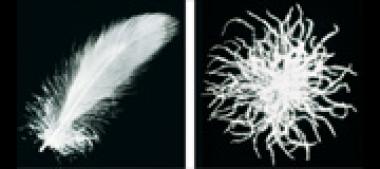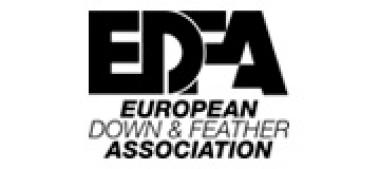How can down and feathers be sorted?
In the separation process down and feathers are sorted with the aid of air which is blown into a special sorting machine consisting of three or four chambers. The airflow generated in the machine achieves that due to gravity the single components fly different distances. The lightest components fly the longest distance and the heaviest elements fly the shortest distance. Correspondingly, the lightest parts, i. e. the down, fly the longest distance and get into the posterior chamber whereas the heaviest parts, i. e. the feathers, do not get any farther than the first chamber.
The different components can be separated by varying the intensity of the airflow.


















